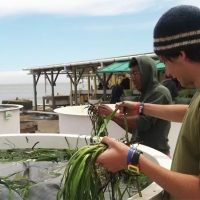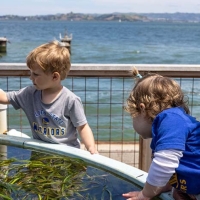Integrating High-Resolution Coastal Acidification Monitoring Data Across Seven United States Estuaries
Beginning in 2015, the United States Environmental Protection Agency’s (EPA’s) National Estuary Program (NEP) started a collaboration with partners in seven estuaries along the East Coast (Barnegat Bay; Casco Bay), West Coast (Santa Monica Bay; San Francisco Bay; Tillamook Bay), and the Gulf of Mexico (GOM) Coast (Tampa Bay; Mission-Aransas Estuary) of the United States to expand the use of autonomous monitoring of partial pressure of carbon dioxide (pCO2) and pH. Analysis of high-frequency (hourly to sub-hourly) coastal acidification data including pCO2, pH, temperature, salinity, and dissolved oxygen (DO) indicate that the sensors effectively captured key parameter measurements under challenging environmental conditions, allowing for an initial characterization of daily to seasonal trends in carbonate chemistry across a range of estuarine settings...


